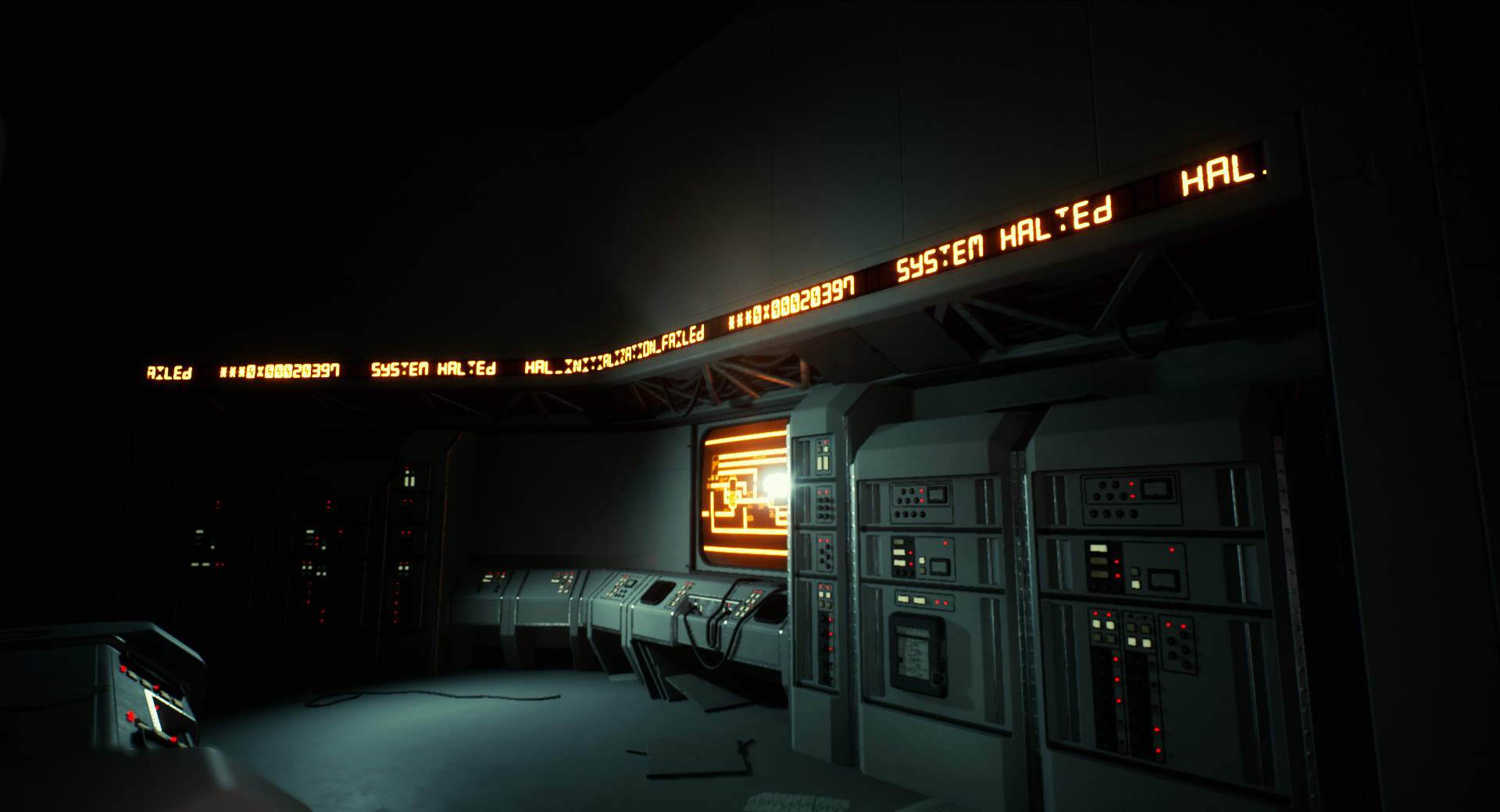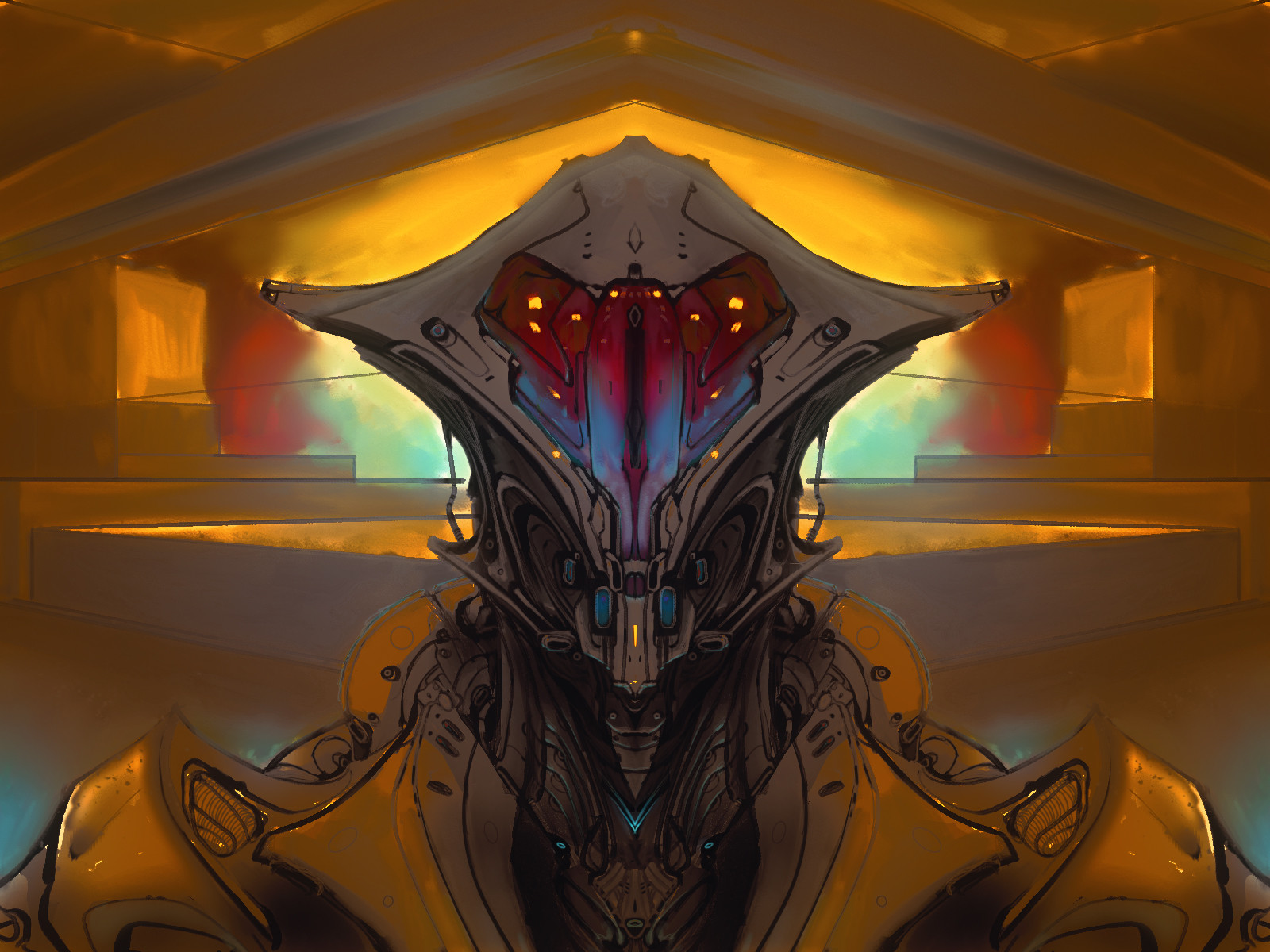Ideas below are rough and ready, refinements and additions will be made in subsequent posts as I think of them.
 |
| Concept art of the Sevastopol from Alien: Isolation, artist unknown |
Techno-Dungeons
Ancient civilisations have left their mark on Egradus. The Ancients and Serpent-Men waged their terrible war in eons past and highly advanced orcish nations flourished until the cataclysmic arrival of humans, dwarves and halflings. While the Serpent-Men were more magically and biologically inclined, the Ancients and orcs had a close affinity with technology. In the process of their endeavours on Egradus they built structures and machines of immense complexity - the Ancients relied on vast AI-controlled terraforming facilities and laboratories to transform the planet in their image, while the orcs constructed tools of war, space travel and industry in their quest to reclaim the stars.
Such endeavours required huge amounts of processing power and computational ability. Thus were born the techno-dungeons: enormous hardened structures governed by AI that were designed around a single purpose. This could be anything from maintaining and running an automated singularity foundry to determining floating point spacetime co-ordinates for an experimental teleporter.
These facilities were designed to be run by the AI within with a singularity of purpose, free from external distractions save for minimal supervision. They would have their own maintenance subroutines and defences and the resources to self-sustain their operations. None of them survived the ravages of the years intact but there are many that are still in semi-operational condition. The power and wealth that lie within are immense, but so too are the dangers that still lurk in the forgotten metallic depths.
I'll be doing a separate post on techno-dungeons and will hopefully produce a working one for use sometime soon.
 |
| Credit, Andrew Fichthorn |
Monsters
Mindcage (Ransomware)
Strange creatures spawned from intelligent beings' avarice that possess a pathological desire for wealth, which they can't bring themselves to spend.
Very few people have ever seen a mindcage in its true form, even when it attacks, as they are always disguised as something else. They generally disguise themselves as a container with something valuable within - when an unwitting person opens the container they leap out and force themselves into the victim's brain through the auditory organs. This process is painless and often unnoticed, but the victim soon finds their thoughts and memories rapidly disappearing and any attempts to communicate are emitted in a glossolalia gibberish.
Eventually the victim stands stock still in a catatonic state, demanding large amounts of treasure and valuables in a loud monotone. Once paid, the mindcage moves on but their victims remain in the same catatonic state for several weeks as they gradually recover from the experience. A mindcage's true form resembles a small, hunched humanoid figure with sallow pale skin, a distended toothless mouth and fingers that trail off into fractal filaments.
AC: 14, HD: 3, Attacks: special, Move: 30', Save As: 3rd level Magic-User, Morale: 7
SPECIAL
A mindcage can become incorporeal as a full-round action. It can only be seen or harmed by magic or magic items.
Instead of attacking, a mindcage attempts to enter a target's brain. It must be in ethereal form to do so. The target must Save vs Magic to resist, failure means that the mindcage successfully takes up residence in their brain. Success alerts the target to this attempt. Once inside the target's brain, the mindcage drains 1 point of INT and WIS per round; the target loses the power to speak intelligibly once 5 or more rounds pass. The target becomes catatonic as soon as their INT or WIS reach 3.
Once these stats reach 0 the target doesn't die but begins to demand large amounts of treasure - it will demand a greater amount than what is currently available to the party. If paid then the mindcage will absorb the treasure into their incorporeal form and flee to their lair. The target is restored to 3 INT & WIS and is rendered unconscious until their stats are restored to normal, which recovers at the standard pace. If nothing is paid then the victim will eventually die of thirst or starve.
Magic can be used to attack a mindcage directly but the attacker must be able to see the creature in order to avoid damaging the host.
---
Code Servitor (Daemon)
Techno-dungeons are elaborately maintained electrical ecosystems - temperature, humidity, atmospheric particulate levels and more must be kept at a precise equilibrium to avoid damage to the delicate machinery contained within. Code Servitors are slaved to perform one specific purpose - filter the air, lower the temperature, equalise static charges, remove intruders etc. - and will fulfil it with a single-minded determination. They are generally small in stature and their appearance is utilitarian - they are designed with a specific task in mind, not aesthetics. Most servitors are mass produced by central processing but some are custom made for specific, vital tasks. Interrupting their tasks can prove massively detrimental to the dungeon at large and also to an adventurer's health.
AC: 14, HD: 2, Attacks: 1 appendage for 1d6 damage/special (see below), Move: Fly 30', Save As: 2nd level Fighter, Morale: -
SPECIAL
Code Servitors never fail morale checks and are immune to fear effects from spells and abilities.
The special effects of Code Servitor attacks vary depending on the servitor's purpose. For example a temperature control servitor may set a their target aflame or freeze them, or a humidity controller might drain all of the liquids they are carrying and start desiccating them.
---
Memetic Annelid (Worm)
Despite the efforts of the Code Servitors and heuristic intrusion countermeasure agents, life (of a sort) finds a way. Unauthorised lifeforms in a techno-dungeon survive through stealth, hiding in plain sight by deceiving the dungeon's guardians or secreting themselves in remote locations, or through rapid reproduction. Memetic annelids favour the latter method, dividing and splitting at the slightest provocation. The rich concentrations of resources held by living organisms and isolated machines provide tempting targets for them, and their prey's fate is as good as sealed as soon as an annelid manages to burrow inside.
AC: 12, HD: 1, Attacks: 1 bite + grab for 1d6 (Save vs Paralysis to avoid being grabbed) + special, Move: 30', Save As: 1st level Fighter, Morale: 10 if targets are outnumbered, otherwise 7
SPECIAL
A memetic annelid can burrow into a target that it has grabbed. This is a full round action. The target takes 1d8 damage as the annelid burrows into them and takes 1d8 damage on each subsequent round. A target reduced to 0hp while an annelid has burrowed inside them explodes in a pile of gore and 1d4+1 annelids emerge from their remains, acting at the end of initiative order.
---
Hostile-Key Isolators (Antivirus Quarantine)
While intruders are generally dealt with in a lethal fashion, central processing may choose to make an exception according to its arcane and ancient programming. While external entities may sometimes be tolerated, heuristic threat analysis is applied to their possessions and capabilities. Hostile-Key Isolators swarm subjects flagged as hazardous and strip them of anything deemed threatening, phase-shifting the offending articles to a quarantine zone.
AC: 14, HD: 1, Attacks: special, Move: Fly 30', Save As: 1st level Fighter, Morale: 12
SPECIAL
Roll below to see what has triggered the hostile response:
- Weapons
- Light sources
- External bio-contaminants (food, water & animal products)
- Aetheric disturbances (magic items, scrolls and potions)
- Unauthorised visual recordings (eyes)
- Prohibited auditory sensors (ears)
- Magnetic anomalies (metal objects)
- Suspicious containers (backpacks & sacks)
A successful hit requires the target to Save vs Magic Device. On a failure the hostile-key isolator phase-shifts the offending article to quarantine and withdraws from the target. Every isolator carries a private key with which to access the quarantine zones if required.
 |
| Credit, John F Stifter |
Other
This wispy purple-ish smoke smells of ozone and burned plastic. It is intelligent and benign, and is capable of providing power to electrical devices. It can be bottled and if poured over a damaged electrical device it has a 2-in-6 chance of restoring normal function for 1d6 Turns. Pouring it onto a working machine will boost its functions for 1d6 Turns but runs a 3-in-6 chance of overloading it once this time has elapsed. Magic smoke will refuse to re-enter a machine from which it has escaped, for reasons it refuses to elaborate on.

No comments:
Post a Comment